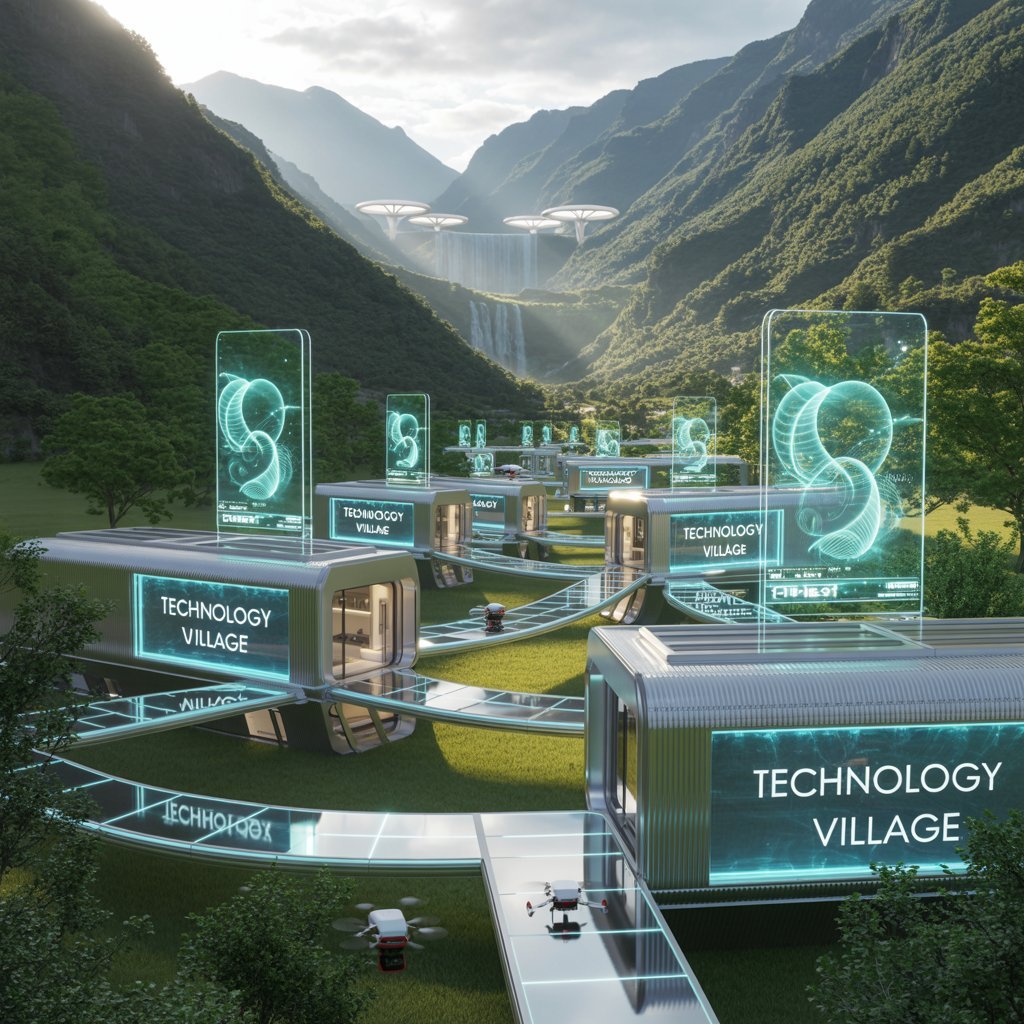Introduction
In an era defined by digital transformation, the concept of a technology village is emerging as a powerful solution to bridge the gap between innovation and community. Whether you are an entrepreneur looking for a startup ecosystem, a tech enthusiast seeking collaboration, or a policymaker planning future-ready infrastructure, understanding what a technology village offers is vital.
The term goes beyond just infrastructure. It represents a self-sustained hub where education, startups, government, and industries collaborate to foster technological growth, create jobs, and provide scalable solutions. In this article, we’ll explore the idea of a technology village, why it matters, how it functions, and how you can benefit from being part of one.
What Is a Technology Village?
A technology village refers to a specially designed community or zone dedicated to innovation, research, and technological development. These villages typically consist of coworking spaces, R&D centers, incubators, universities, manufacturing facilities, and residential areas for tech professionals.
Unlike traditional tech parks or industrial zones, a technology village integrates living, working, and innovation into a cohesive ecosystem. It encourages collaboration between startups, educational institutions, corporations, and the public sector.
Common features of a technology village include:
- High-speed internet and digital infrastructure
- Incubation centers for startups
- Technical universities or research institutes
- Smart buildings and IoT systems
- Green energy and sustainability-focused design
- On-site housing and transport systems
The Key Benefits of a Technology Village
Drives Economic Growth and Job Creation
Technology villages attract tech startups, R&D firms, and multinational companies. This leads to employment generation and boosts the local economy through increased productivity, investment, and exports.
Encourages Innovation and Collaboration
By clustering like-minded individuals and institutions, these villages stimulate knowledge exchange, interdisciplinary collaboration, and faster technological advancement.
Supports Education and Research
Many technology villages are closely associated with technical universities and research centers, providing hands-on learning and real-time implementation opportunities for students and researchers.
Enhances Quality of Life
Integrated urban planning in tech villages ensures a better quality of life with access to healthcare, education, public transport, and entertainment, reducing the need for long commutes.
Fosters Sustainability
Many tech villages are designed with eco-friendly principles such as smart energy grids, water conservation systems, and waste management practices.
Real-World Examples of Technology Villages
Dubai Silicon Oasis, UAE
A globally recognized free zone, Dubai Silicon Oasis offers state-of-the-art infrastructure for electronics, IT, and tech startups. It houses universities, R&D labs, and smart housing, making it a prime example of a modern technology village.
Technopark, Trivandrum, India
As one of India’s largest IT parks, Technopark blends technology and lifestyle. It supports over 400 companies and offers residential complexes, recreational areas, and medical facilities for its tech workforce.
Sophia Antipolis, France
Known as Europe’s leading technology cluster, this village emphasizes interdisciplinary research across IT, biotech, and environmental sciences, attracting global talent and fostering innovation.
Konza Technopolis, Kenya
Dubbed “Silicon Savannah,” Konza is a flagship smart city initiative in Africa that combines technology innovation, green energy, and futuristic urban design.

Key Components That Define a Successful Technology Village
1. Smart Infrastructure
From cloud-based data centers to 5G connectivity, a strong tech backbone is essential. Smart lighting, surveillance, and waste systems also contribute to a safer and more efficient environment.
2. Education and Talent Development
Technology villages must integrate academic institutions to develop skilled workers in AI, robotics, data science, and more. Internships, research projects, and hackathons are often held in partnership with local universities.
3. Government and Policy Support
Tax incentives, funding schemes, and relaxed regulations help startups thrive. Collaboration between public bodies and private enterprises ensures long-term success.
4. Community and Lifestyle Integration
Beyond business, these villages must support work-life balance with parks, gyms, childcare, and cultural centers. This holistic approach attracts top talent and reduces burnout.
5. Sustainability and Green Tech
Solar-powered buildings, EV charging stations, rainwater harvesting, and green roofs are becoming standard in these villages to promote environmental responsibility.
Challenges Facing Technology Villages
High Initial Costs
Building a technology village from scratch involves large capital investments. Infrastructure, utilities, and smart systems require significant planning and financing.
Talent Retention
While attracting talent is one goal, retaining it is another. A lack of lifestyle amenities or high living costs can drive people away from tech hubs.
Infrastructure Maintenance
As tech evolves, constant upgrades are needed to stay competitive. Aging infrastructure or cybersecurity vulnerabilities can become liabilities.
Inequality and Displacement
Rapid development can sometimes sideline local communities or widen economic disparities if not managed inclusively.
FAQs About Technology Villages
What is a technology village?
A technology village is a dedicated community or zone focused on innovation, research, and development across various tech industries, often integrating housing, education, and smart infrastructure.
Are technology villages only for tech companies?
No. While tech companies are primary tenants, these villages also include schools, medical facilities, retail stores, and residences to support a complete ecosystem.
How do I join a technology village as a startup?
Startups can apply through incubation centers or government-sponsored programs linked to the tech village. These often provide co-working space, mentorship, and funding.
Can small towns become technology villages?
Yes. With proper planning, even small towns can evolve into tech villages by integrating smart infrastructure, tech education, and attracting industry partnerships.
Are there any technology villages in the United States?
Yes. Examples include Silicon Valley in California and Research Triangle Park in North Carolina. While not called “villages,” these areas function similarly by clustering innovation and support.
Read more about technology village
Conclusion
As the world embraces digital-first thinking, technology villages offer a powerful model for inclusive growth, sustainable development, and cutting-edge innovation. They represent a confluence of academia, entrepreneurship, governance, and lifestyle, wrapped in a future-forward vision.
Whether you’re an entrepreneur, policymaker, student, or investor, engaging with or developing a technology village can be a transformative opportunity.